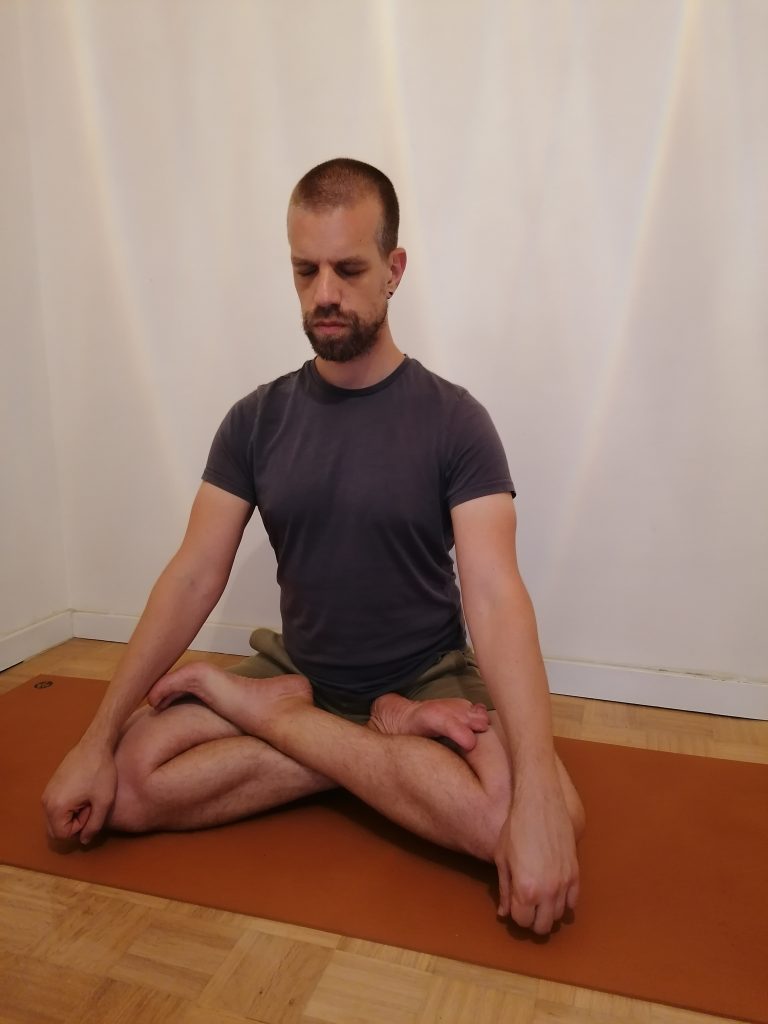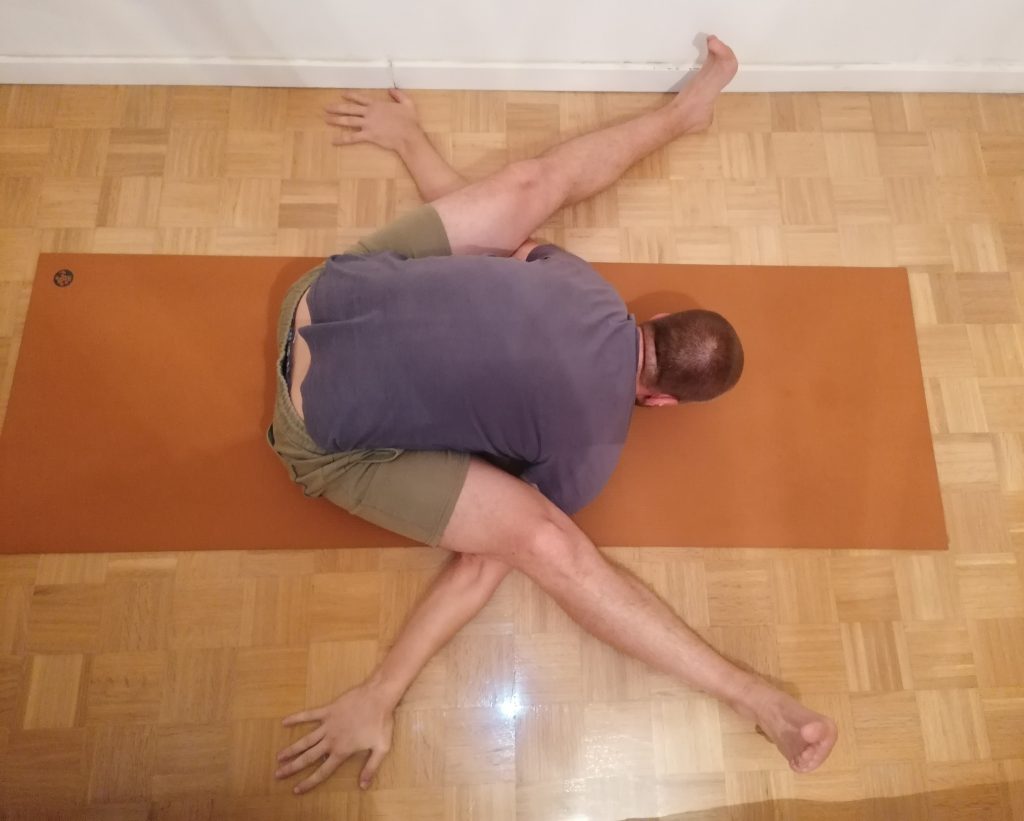The Pretzel pose is a very demanding yoga pose. The pose itself is known by different names: Sleeping Yogi, Yoganidrasana and of course, the Pretzel pose.
One of the main reasons why this pose is called Yoganidrasana is that when the practitioner is in the pose, it appears as if he is sleeping and his feet act as a pillow. Especially when his back is resting on the floor, when he is not in a balance pose, with his saddle halves on the floor.
Having that information in mind, this is a very demanding pose. Because of that, my suggestion is that you do not practice this pose until you have achieved a very good external rotation of your hips and knees. It is also very important to develop the strength of your neck muscles. They will hold the weight of your legs, whose position will be behind your neck. Therefore, for the correct execution of this pose, it is important that you have achieved flexibility and strength. Like all other poses, there are preparatory poses for this as well. Consequently, yoga practitioners who are not yet physically ready to do this pose fully can practice these preparatory poses.
The pose itself is excellent for stretching the lower back, gluteus, hamstrings and groin. The pretzel pose is excellent for opening the hips more deeply.
Given that, this pose requires good external rotation of the hips and knees. If you cannot boast the same at the moment, my suggestion is to focus on practicing the poses that improve the external rotation of your hips and knees.
In most cases, the “main culprits” for a poor external hip rotation are mainly your adductors. The function of these muscles is to adduct the femur in the hip joint.

I suggest three yoga poses that you can practice, all aimed at improving the external rotation of your hips. The first pose is the pigeon pose (Raja Kapotasana), the second is the lotus pose (Padmasana) and the third is the cow pose (Gomukhasana). If you can’t do these poses completely, feel free to practice their variations. You should not let your body get injured. With that in mind, the preparatory poses are far more effective than full poses when the practitioner’s body is not yet mature for them.
When it comes to the external rotation of the knee, there are three very simple movements that have the effect of improving the rotation of your knees. Each movement implies that your knees are slightly bent, and that your palms are placed on them.
The first movement involves knee rotation. The first rotation is from the right side to the left side, with the feet together. It is enough to repeat this rotation five times. After repeating that five times, perform a rotation from left to right.
The second movement is very similar. The only difference is that your feet are in a lunge. They are shoulder width apart. Do five rotations for both right and left side.
The third movement involves keeping your feet in a lunge. Make sure that the lunge is not less than the width of your shoulders. First, do a circle with your knees backwards, inwards, and forwards and repeat it five times. After that, do it in the opposite direction – go forward with your knees, spread them to the side, go back, and bring them together in the starting position. Once you have achieved a good external rotation of your hips and knees, move on to strengthening the neck muscles, if you have not already developed them.
The pose that is most often practiced before entering the pretzel position is the turtle pose – Kurmasana. Of course, getting into the full turtle pose implies that you have stretched leg tendons, groin, and back. The pose itself is excellent for lengthening the entire spinal column, for relaxing the neck, shoulders and head.

Let’s go back to the Pretzel pose. Regardless of whether you enter it sitting or lying down (both variations are possible), it is very important that you enter it with a lot of attention and awareness. You must first be aware of the limitations of your body. You must not allow your ego to pull you down and lead you to injury. If you have decided to do the pose fully, evaluate which variation suits you better: whether sitting or lying down. The seated variation can be more challenging since you have to maintain a balance on your seat halves while getting into the position itself.
Sometimes, it can happen that the practitioner can easily put one leg behind the head and place it on the neck, but crossing the other leg can be a problem. That crossing of the other leg behind the neck can lead to injury, especially if you enter the pose while sitting down. The reason in most cases (if the legs are stretched properly) is the loss of balance when moving the other leg behind the head.
When it comes to the benefits of this pose for your body, I can state first of all that by practicing this pose, you improve your digestion process. It improves circulation, reduces stress, increases flexibility and releases tension from the spinal column. It should also be noted that practicing this pose leads to the drainage of lymphatic fluid. In this way, we raise our immune system and face the diseases and infections more easily.
The Pretzel pose is very challenging and demanding. Sometimes, it happens that practitioners who are not yet ready to practice it get pulled by their ego and cause nothing but injury. That being said, forget about this pose if you are just starting out your yoga practice. Please use this guide as an informational reading only, not as a tool for your yoga practice.
Conclusion
If you really want to try this pose, start with the preparatory poses first, work on improving the external rotation of the hips and knees. Take care of yourself, take care of your body.







